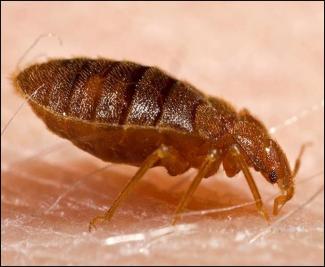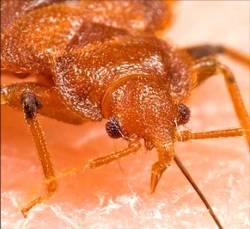Dos and Don’ts
Responding to a bed bug infestation effectively requires utilizing a combination of approaches. Some of these include thorough inspection, monitoring, reducing clutter, improving sanitation, using physical barriers, and carefully applying pesticides if needed. This type of comprehensive pest control strategy is called “Integrated Pest Management (IPM)”.
If you think you might have bed bugs, it is important to respond quickly before the infestation gets worse. However, it is just as important that the response is carried out safely so as not to cause harm to yourself or your family members.
Please review the following Dos & Don’ts when responding to a potential bed bug problem:
Don’t:
- Don’t panic! Bed bugs can be controlled with careful inspection and by using proper control methods.
- Don’t ignore the bed bugs. Acting right away will increase success in eliminating bed bugs.
- Don’t sleep on another bed or the sofa. Bed bugs may follow making it much more difficult to get rid of them.
- Don’t try to kill bed bugs by using agricultural or garden pesticides or other unregistered products. Using pesticide products to kill bed bugs that are labeled for outdoor use can make humans very sick.
- Don’t use rubbing alcohol, kerosene or gasoline. These chemicals may cause fires.
- Don’t try to kill bed bugs with room foggers or “bug bombs.” The mist released by these items just does not reach the places where bed bugs hide.
- Don’t place mothballs or Boric acid dust between the mattress and box spring or under and around the bed. These products are not labeled or approved for the control of bed bugs and are not effective.
- Don’t use mosquito repellent in an attempt to keep bed bugs off while sleeping. Conventional insect repellents, like those used to deter ticks and mosquitoes, do not appear to be effective against bed bugs.
- Don’t throw away furniture. In most situations beds and other furniture can be treated for bed bugs effectively. Throwing away furniture can spread the bugs to other homes and apartments.
- Don’t store things under the bed. Storing stuff under the bed gives bed bugs many new places to hide. This makes it more difficult to get rid of bed bugs.
- Don’t move things from room to room. Moving things from the room with bed bugs to another room in the house may spread the bed bugs.
- Don’t wrap items in black plastic and place in the sun. It will not get hot enough inside the bag to kill all the bugs. Likewise, placing bedding or furniture outside in the winter may immobilize the bugs temporarily, but not kill them. Temperatures outside need to be sustained at 0ºF or less for at least three days.
Do:
- Identify the bug to make sure it is a bedbug. Information to help you identify bed bugs is available on our “Bed Bug Identification, Inspection, & Treatment”fact sheet.
- Do contact a licensed and knowledgeable Pest Management Professional or the local Health Department for advice and assistance.
- Do carefully read and follow all the label directions and safety precautions for any pesticide products used.
- Do take steps to reduce clutter and organize personal possessions. Clothes and fabric items that may be infested should be dried in a hot dryer for at least 30 minutes. If infested furniture or bedding needs to be disposed of, wrap these items in plastic before removing them from the home or apartment.
- Do discourage others from taking the discarded items by spray painting a big “x” on both sides, by cutting the fabric so it looks ruined, or by dissembling the item to render it unusable.
- Do vacuum all floors and surfaces frequently. Before you finish vacuuming, place a handful of talcum powder on the floor and vacuum it up. The powder will coat and kill any bed bugs or eggs you may have sucked up into the vacuum’s bag or cannister.
- Do limit visitors to the home or apartment until the bed bugs are gone.
- Do install bed bug proof encasements on the mattress and box spring. Bed sheets/linens should be installed over the encasements. These encasements prevent bed bugs from finding hiding places on the mattress or box spring. The white color makes it easier to detect new bed bug activity. Bed bugs that are trapped under the encasement will die. The encasements should stay on for at least one year.






